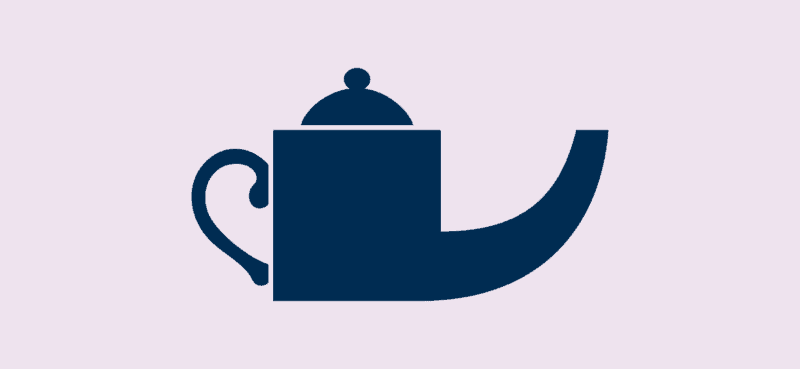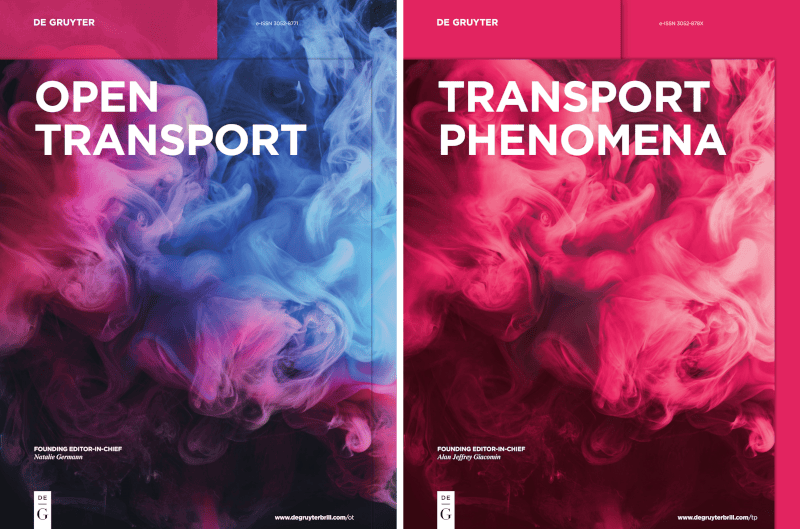A Fresh Brew: Transport Phenomena & Open Transport
Transport sciences quietly power much of modern life, and now two new journals, together known as “teapot”, are brewing fresh insights in the field. We spoke with the Founding Editors-in-Chief, Natalie Germann and Alan Jeffrey Giacomin, about their mission and vision, and what the journals aim to bring to the community.
With these new additions to our portfolio, we’re confident that the puns on tea will never run dry! Let us introduce Transport Phenomena (TP) and Open Transport (OT) — two “sibling journals” you’ll soon know collectively as teapot.
A connection to tableware is not the only thing these journals share: They also have a common scope and editorial vision.
We asked founding Editors-in-Chief Natalie Germann and Alan Jeffrey Giacomin to share their thoughts on what transport phenomena are really about, their experience launching these new journals, and what readers and authors can expect.

Natalie Germann is chaired professor of process systems engineering at the University of Stuttgart, Germany, and Alan Jeffrey Giacomin is chaired professor of chemical engineering at Queen’s University in Kingston, Ontario, Canada. They answered our questions together, in written form, giving us a sneak peek into the world of teapot.
De Gruyter Brill: Natalie and Jeff, please give us the tea – in a few sentences, what are these two new journals all about and how does a certain hot beverage tie into their story?
Natalie Germann & Alan Jeffrey Giacomin: Transport Phenomena and Open Transport (teapot) are broadly-scoped, identically, to embrace everything to do with flow, be it heat, mass or momentum. Their shared teapot emoticon captures it all: we heat to brew, we diffuse to infuse, and we pour to flow. It’s a playful yet fitting metaphor, inspired by its abbreviation, for how these new journals infuse across the cognate transport disciplines, and around the world.

DGB: For readers without a background in physics, chemistry or engineering: how does research on transport phenomena connect to everyday life and practical applications?
NG & AJG: The transport phenomena explain how heat, fluids, and particles move—motions we encounter every day. It’s how your coffee cools, how your house stays warm, how medicines dissolve in the body, how food feels and how engines stay cool. From climate control to cooking to clean energy, the transport sciences quietly power much of modern life through the science of heating, diffusion, and flow.
“The pace of human progress accelerates with how well mankind can understand the transport phenomena.”
Beyond its intellectual depth, transport phenomena is intrinsically beautiful, photogenic, often yielding stunningly insightful imagery and videography, frequently attracting the attention of the popular press. The pace of human progress accelerates with how well mankind can understand the transport phenomena.
DGB: The teapot journals follow different publishing models. How do they complement each other?
NG & AJG: Transport Phenomena and Open Transport are two popular journal models founded by the same editorship, following the same style of editorship, with the same scope. Whereas Transport Phenomena is our classical library subscription journal offering, Open Transport is modern fully open access. Authors can now choose between models without choosing away from their favourite editorship. Teapot is thus a new publishing instrument invented to bring out the best in the transport community.
DGB: Looking back at the journal launch, what did you find most fun, and what proved most challenging?
“The biggest challenge? Patience.”
NG & AJG: The most fun was customizing every aspect of the launch—defining scope, building editorial boards, tailoring the publication models and designing the submission and peer review system for seamless author and reviewer experiences. The biggest challenge? Patience. From day one, we were eager to see the project take shape and could not wait to launch and bring teapot to life.
DGB: How did you get into editorship, and what excites you most about your work today?
NG & AJG: In our previous editorships, we took an abandoned journal, and in ten short years, transported it into the world’s most popular fluids journal. We perfected a style of editorship that brings out the best in the community our journal serves. Along with De Gruyter Brill, we now lead the more broadly-scoped Transport Phenomena and Open Transport, launching our transport community’s next great run.
DGB: Why did you choose De Gruyter Brill?
NG & AJG: We chose De Gruyter Brill for their strong traditions of academic publishing, as well as their alignment with our core principles: excellence, ethics, and editorial independence. Together, we’re committed to treating authors the way we ourselves want to be treated—with fairness, alacrity and respect. This partnership is the ideal foundation to grow Transport Phenomena and Open Transport into leading journals serving and befriending globally transport scientists and engineers.
DGB: To close the teapot: If Open Transport and Transport Phenomena were tea flavors, which would they be, and why?
NG & AJG: Open Transport is a fresh green tea—inviting, accessible, and open to all, reflecting its fully open access model. Transport Phenomena is a strong black tea—classic and timeless, with a profound impact on the field. Different flavors of the same brew, with the same core principles, both inspiring and connecting the global community of transport phenomenologists.
***
Articles publish online as they clear peer review. Submissions are already clearing peer review and will publish presently. Inaugural teapot issues will publish in January 2026. Do you have any exciting research on fluid dynamics, heat transfer, or mass transfer that you would like to share? We welcome contributions from researchers in the physical and biological sciences, applied mathematics, and all branches of engineering.
Visit the Open Transport and Transport Phenomena product pages for more information, submission guidelines, and details of upcoming issues!
[Title Image by zhikun sun/iStock/Getty Images Plus]
